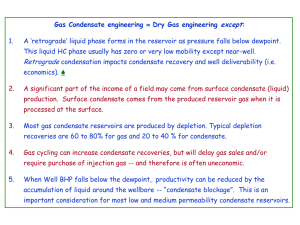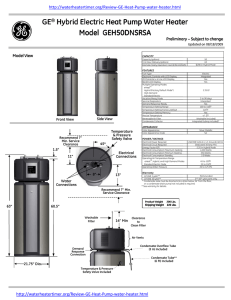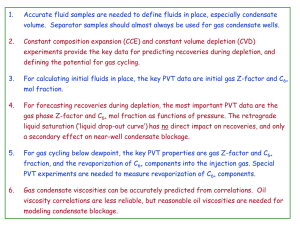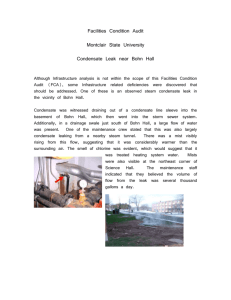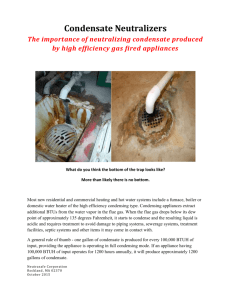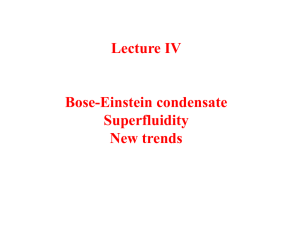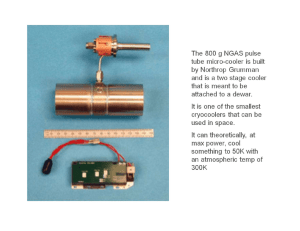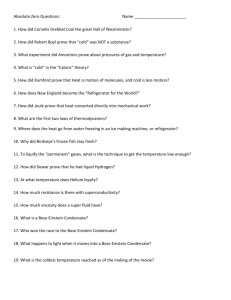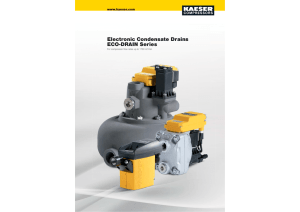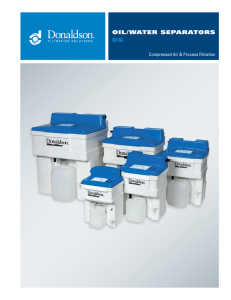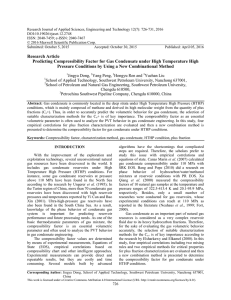Nonlocal Condensate Model for QCD Sum Rules Ron-Chou Hsieh
advertisement
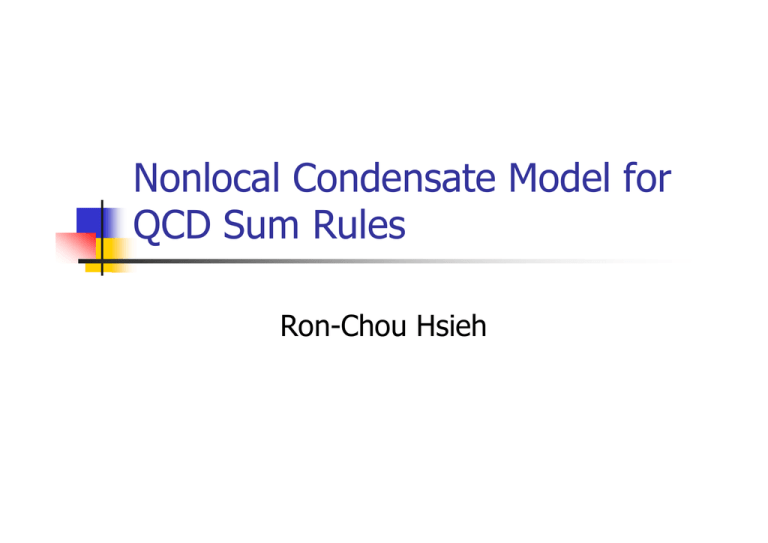
Nonlocal Condensate Model for QCD Sum Rules Ron-Chou Hsieh Outline Concepts Local and non-local condensates Summary 2 Pion form factor TH The pion form factor can be written as the convolution of a hardscattering amplitude TH and wave function φ ( x ) 3 Concepts Basic idea : Describing the nonperturbative contribution by a set of phenomenologically effective Feynman rules ------- “quark-hadron duality”. How to do it ? ¾Dispersion relation : a phenomenological procedure which connect perturbative and non-perturbative corrections with the lowest-lying resonances in the corresponding channels by using of the Borel improved dispersion relations ¾Borel transformation : a) An improved expansion series b) Give a selection rule of s0 4 Dispersion relation Firstly, consider a polarization operator which was defined as the vacuum average of the current product: Where the state is the exact vacuum which contain nonperturbative information. 5 Now, we can insert a complete set of states and the identity Between two currents. Here assuming that there exists a threshold value s0 which can separate the matrix element to lowest resonance state and other higher states. 6 Because the general structure of and can be given by can be inferred from OPE And via the dispersion relation, the function with the spectral function can be written as is 7 Thus, we can obtain a duality relation between the hadronic resonance and quark contributions Such that 8 The Borel transformation 9 The choice of s0 in two-photon process 10 Pion form factor in QSR 11 Again, insert the complete set of states and identity: With the matrix element is given by PCAC: 12 13 Local and non-local condensate An exact propagator : The Wick theorem : The normal ordering : 14 Operator product expansion In the QSR approach it is assumed that the confinement effects are sufficiently soft for the Taylor expansion: 15 Local condensate result of pion form factor B.L. Ioffe and A.V. Smilga, NPB216(1983)373-407 16 The infrared divergence problem 17 Non-local condensate models In 1986, S. V. Mikhailov and A. V. Radyushkin proposed: with Other models A.P. Bakulev, S.V. Mikhailov and N.G. Stefanis, hepph/0103119 A.P. Bakulev, A.V. Pimikov and N.G. Stefanis, 0904.2304 18 Compare with the simplest gauge invariant non-local condensate : Must obey following constrain condition 19 Local condensate: Nonlocal condensate: 20 The Källén-Lehmann representation The exact fermion’s propagator : Non-perturbative part (normal ordering) Renormalized perturbative part 21 Recast the equation into: And set the nonperturbative piece as: Here otherwise is means that for s larger than then the lower bound is s 22 The quark condensate contribution can be obtained by the normal ordering The weight functions are parameterized as 23 μ2 μ2 = s mγ2 s mγ2 small s region fs HsL = f v H sL = 2 H1+a sL s − mγ large s region fs HsL = H1 + a sL s s ∗ ErfcB mγ a+ a+ 1 s 1 s F f v HsL = −1−a s H1 + a sL s s ∗ ErfcB a+ 1+ as F 1 s 24 The dressed propagator for the quark is then given by With the definitions 25 Expected results 26 Summary The infrared divergence problem can be solved by our nonlocal condensate model. The applicable energy region can be extended to 10 GeV2 in the calculation of pion form factor. Can we use the Källén-Lehmann representation to improve the QSR approach? 27
